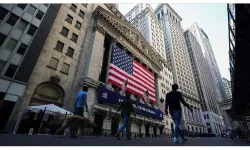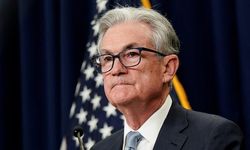The cracks in the US stock market may not be a typical rupture affecting one or more asset classes. Rather, CNBC reports, the recent collapse in equities points to a shift in investor perception that could have widespread repercussions.
The market narrative that the Federal Reserve is keeping policy rates low and everyone on Wall Street is reaping the benefits of this market environment may be a thing of the past. This is because the economic environment that the Fed has been trying to impose on the markets, in which interest rates will remain higher for longer, is starting to be adopted.
As of Tuesday, 10-year US Treasuries set a new record high at their highest level in 16 years. Quincy Krosby, Global Chief Strategist at LPL Financial, said, "When you have an economy based on zero interest rates, the calculations have to change after a quick 5% move (in 10-year bond yields). Because the results will also change. The cost of capital is going up. Companies will have to refinance at higher interest rates."
The rise in interest rates is a very worrying situation for investors, especially as the third quarter balance sheet season approaches.
"All of this needs to be absorbed and digested by the market. You can see how complicated and difficult this is."
Economy and inflation concerns
After a nightmarish September, economic data released on Tuesday signaled that the US stock markets may have another challenging month.
Figures released by the US Department of Labor showed that job openings rose sharply in August. The rise in the numbers signaled the opposite of the narrative that the robust US labor market is loosening and that there will be less upward pressure on employee wages.
Investors are worried that the central bank will be forced to keep monetary policy tight for longer. This investor sentiment made itself felt throughout the week. At least four Fed officials said they favor rate hike policies or expect high interest rates to remain for longer.
Yields on 10- and 30-year US Treasuries hit multi-year highs as stocks fell.
"Low and negative interest rates have changed the economy too much. Now we are adjusting to accept an interest rate regime that is more historically normal," Krosby said.
Adjusting to a more typical interest rate environment may not be such a terrible change. After all, before the Global Financial Crisis, the average yield on 10-year US Treasuries was around 7%. But after 15 years of an unnaturally low interest rate environment, the normal can seem abnormal.
Financial companies in trouble
Much of the economy faces interest rate-related risks. But banks are the biggest problem, CNBC reports. The sector was rocked by the collapse of multiple banks earlier this year. Having accumulated too many long-term government bonds, several banks were forced to sell these assets at a loss to cover deposit flight.
According to the US Deposit Insurance Corporation, as of the second quarter, banks' unrealized losses, which do not appear on their balance sheets, amounted to $558.4 billion. This figure represents an increase of 8.3% compared to the previous quarter. Of these losses, $309.6 billion were held-to-maturity Treasury bonds, which led to the banking crisis this year.
According to Larry McDonald, Founder of The Bear Traps Report, this figure is expected to rise.
"The problem is that when your core capital is weak, any weakness on the other side increases exponentially. If Treasury yields go to 6-7 percent, leverage is going to increase exponentially, right? That's your core capital. This is the principal that you have to put on the table when you go to a ," he said.
The famous stock market expert warned that banks may have to issue equity to cover their losses. This means bad news for bank stocks.
This economic picture has other consequences.
For example, consumers are feeling squeezed in many areas, from mortgage rates to credit cards and personal loans. More than 36% of banks reported tightening lending standards in the third quarter. This is a level consistent with recessions in the past.
Behind the scenes of the Wall Street sell-off
In the US, bond yields are rising and stocks are plummeting day by day. According to experts, there are much more structural reasons for this sharp decline in stock markets
Editor: Albert Owen
Trending news

Snoop Dogg to carry the Olympic torch

Lily James Expresses Admiration for Hailey Bieber’s Rhode Skincare Line

Taylor Tomlinson Will Explore Her Faith and Sexuality on Tour!

'Alien mummy' in Peru raises eyebrows

Scandal in the heart of Europe: Child abuse in a church!

Kamala Harris’ Running Mate: Here’s Who Could Be Her VP After Biden Drops Out And Endorses Her









